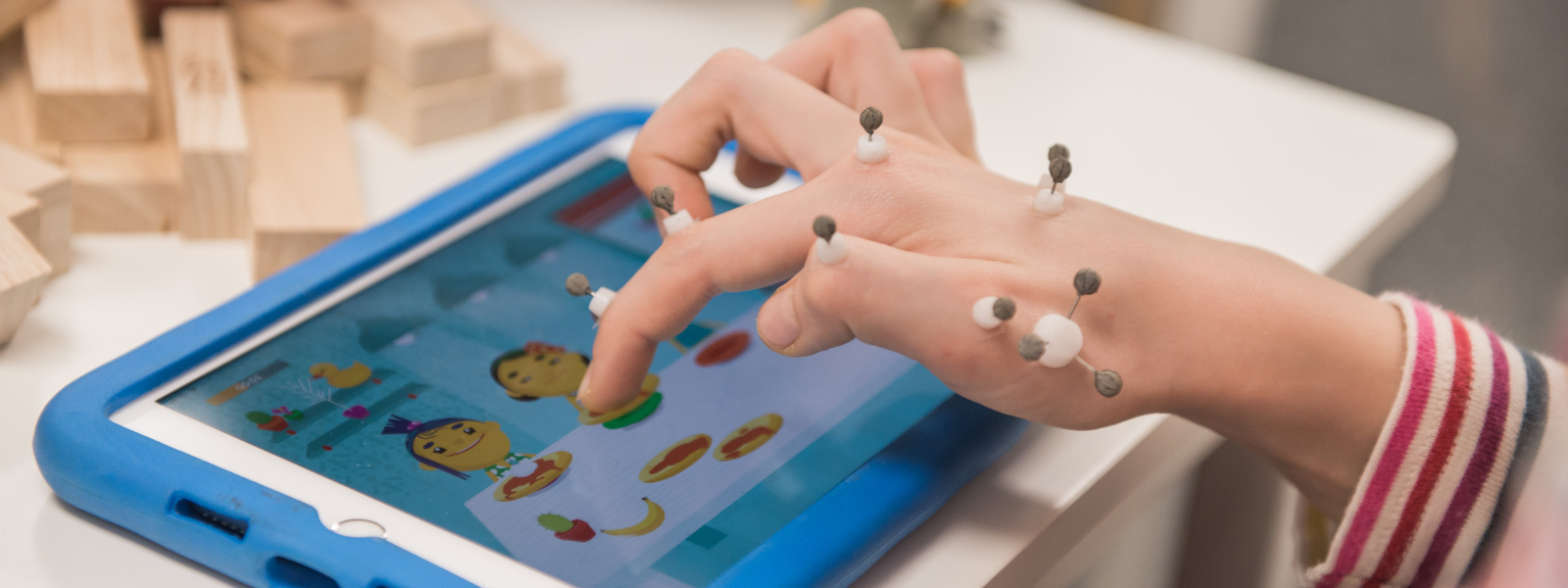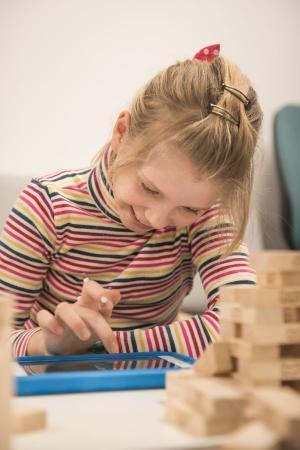
A pioneering interdisciplinary study has shown that how young children play a simple iPad game could support early identification of autism.
Led by researchers at the University of Strathclyde, the study, ‘Motor organisation of social play in children with autism’, published in Journal of the Royal Society Interface, is believed to be the first in the world to combine methods from satellite communications with child psychology to analyse patterns in children’s play.
Play patterns
The international team developed a digital food sharing game to examine play patterns in 878 children aged from two and a half to six years old. This included 372 diagnosed with autism, 64 diagnosed with other neurodevelopmental conditions and 441 without a neurodevelopmental diagnosis.
 The children were encouraged to drag four pieces of food from a serving area to deliver them to a set of four expectant children to trigger feeding animations and an audible celebration. All the children had their swipes tracked.
The children were encouraged to drag four pieces of food from a serving area to deliver them to a set of four expectant children to trigger feeding animations and an audible celebration. All the children had their swipes tracked.
Researchers discovered that children with autism often developed a distinct strategy from other children, using a ‘two-step’ pattern of food movement followed by distribution, in stark contrast to their peers, who developed an integrated and direct strategy of moving one item of food to one plate.
Support needs
The study found this previously unseen indirect strategy became prominent with age among children with autism, highlighting a developmental divergence in motor organisation. It suggests that how children physically execute actions plays a key role in autistic play and development.
Researchers in this novel collaboration between the Laboratory for Innovation in Autism at Strathclyde and University’s Applied Space Technology Laboratory, say this has implications for early detection, as well as understanding the developmental trajectory of autism and the additional support needs of children.
Lead author Dr Ruaridh Clark from the University of Strathclyde, who has a background in the development of space systems and network research, said:
This work shows a clear difference in how children with autism organise their play. They complete fewer iterations of the game and engage in less integrated motor planning, which could limit opportunities for learning through play.
“The implication of these differences are profound, both for their diagnostic potential and in shaping early-years support for children with autism.”
A company has been launched to put this technology into the hands of teachers for accessible, scalable autism assessment. Evermind AI will help with neurodivergence identification and support. The analysis produced is based on the same game and the same system but with artificial intelligence technology. Funded by Innovate UK, the solution is being piloted across UK schools to help teachers understand learner diversity and give every child the best possible educational experience.
Project co-lead Jonathan Delafield-Butt, Professor of Child Neurodevelopment and Autism and Director of the Laboratory for Innovation in Autism at Strathclyde, said: “We applied analysis techniques originally developed for satellite networks to understand how children coordinate their actions in play. It reveals a fundamental difference in how autistic children perceive and engage with the world.”
He said that bridging child psychology with space network analysis, was time consuming, but the rewards were considerable, and added:
Not only can this help us understand the neuropsychology of autism, but it can also help us to understand how best to work with children with autism for gains in learning and education, how to support them in the home, as well as therapeutic gains in the clinic.
The research points to the potential of digital play-based tools to support earlier diagnosis and tailored interventions and also involved the Gillberg Neuropsychiatry Centre and the Universities of Aberdeen, Glasgow, Gothenburg and Warsaw.
Researchers say next steps will be to explore motor organisation in other play scenarios, with the ideas and concepts from the paper also feeding into another space sector project being led at Strathclyde.
The project was funded by the European Union, Engineering and Physical Sciences Research Council (EPSRC), part of UKRI, and a Hawthorne Fellowship in Autism Innovation.
Deeper understanding
EPSRC’s Executive Director for Partnerships, Andrew Bourne, said: “This research helps gives society a deeper understanding of how children with autism approach play and movement, which is vital for shaping better education and support.
“Discoveries like this show the value of EPSRC’s Impact Acceleration Accounts, which helps the researchers we invest in turn ideas into real-world benefits quickly.
“By funding IAAs, we enable breakthroughs that improve lives and inform care for families.”